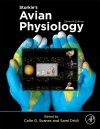About this book
Sturkie's Avian Physiology, seventh edition is the classic, comprehensive, single-volume on the physiology of domestic and wild birds. This latest edition is thoroughly revised and updated with several new chapters with entirely new content on such topics as vision, sensory taste, pain reception, evolution and domestication. Chapters throughout have been greatly expanded due to the many recent advances in the field. This book is written by international experts in different aspects of avian physiology. For easy reading and searches, the book is structured under a series of themes, beginning with genomic studies, sensory biology and nervous systems, and major organs.
This book is an important resource for ornithologists, poultry scientists, and other researchers in avian studies. It is also useful for students in avian or poultry physiology, as well as avian veterinarians.
Contents
Part I. Undergirding themes
1. Importance of physiology of birds
2. Avian genomics
3. Transcriptomics of physiological systems
4. Avian Proteomics
5. Avian metabolomics
6. Mitochondrial physiology
7. Evolution of birds
8. Domestication of poultry
Part II. Sensory biology and nervous system theme
9. The avian somatosensory system: a comparative view
10. Avian Vision
11. Avian Hearing
12. Avian olfaction and other chemical reception (excluding taste)
13. Avian taste reception
14. Avian nociception and pain
15. Magnetoreception and its use for long distance migration
16. Avian subpallium and autonomic nervous system
Part III. Organ system theme
17. Blood
18. The cardiovascular system
19. Osmoregulatory systems of birds
20. Respiration
21. Gastrointestinal anatomy and physiology
21A. Intestinal villi and crypt organization and function
22. Bone
23. Skeletal muscle
24. The avian immune system
Part IV. Metabolism theme
25. Carbohydrate metabolism
26. Adipose tissue and lipid metabolism
27. Protein metabolism
28. Food intake regulation
Part V. Endocrine theme
29. Overview of avian neuropeptides and peptides
30. Pituitary gland
31. Thyroids
32. The role of hormones in the regulation of bone turnover and eggshell calcification
33. Adrenals Rocco
34. Endocrine pancreas
Part VI. Reproductive theme
35. Reproduction in the female
36. Reproduction in the male
37. The physiology of the avian embryo
Part VI. Cross-cutting themes
38. Stress Eco-physiology
39. Physiology of welfare/wellbeing of poultry
40. Reproductive Behavior
41. Physiology of growth
42. Circadian rhythms
43. Circannual cycles and photoperiodism
44. Annual cycles
45. Regulation of body temperature: patterns and processes
46. Flight
47. Physiological challenges of migration
48. Actions of toxicants and endocrine-disrupting chemicals in birds
Customer Reviews
Biography
Colin G. Scanes was formerly editor of the journal Poultry Science and has held senior faculty and/or administrative positions at the University of Leeds, Rutgers – the State University of New Jersey, Iowa State University, Mississippi State University and the University of Wisconsin, Milwaukee. Dr Scanes was also the editor for the latest (sixth) edition of Sturkie’s Avian Physiology for Elsevier/Academic Press. He has extensive experience in teaching undergraduates and research with more than 600 publications.
Dr Sami Dridi is a professor from the University of Arkansas Fayetteville.


































